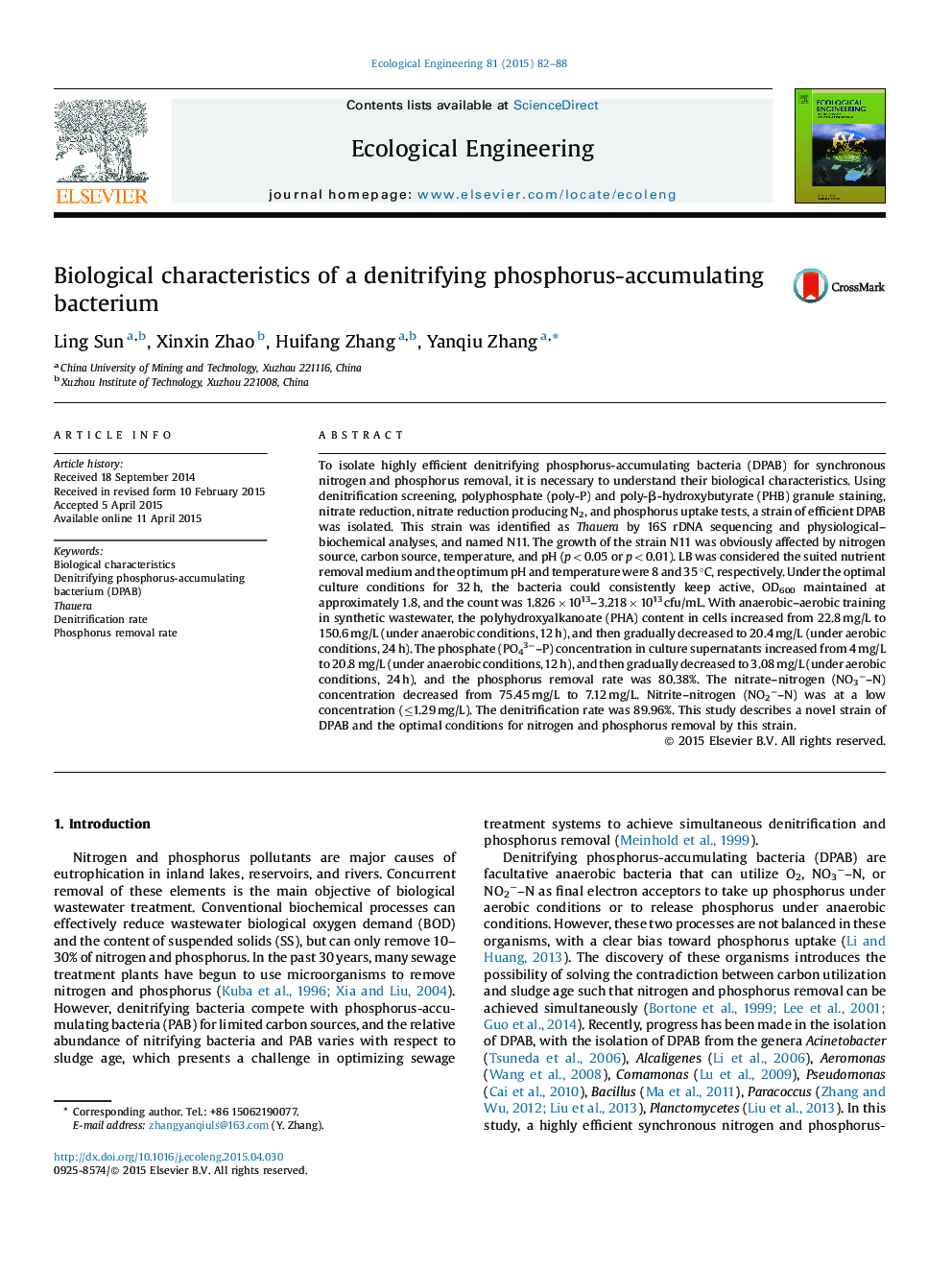| Article ID | Journal | Published Year | Pages | File Type |
|---|---|---|---|---|
| 4389059 | Ecological Engineering | 2015 | 7 Pages |
To isolate highly efficient denitrifying phosphorus-accumulating bacteria (DPAB) for synchronous nitrogen and phosphorus removal, it is necessary to understand their biological characteristics. Using denitrification screening, polyphosphate (poly-P) and poly-β-hydroxybutyrate (PHB) granule staining, nitrate reduction, nitrate reduction producing N2, and phosphorus uptake tests, a strain of efficient DPAB was isolated. This strain was identified as Thauera by 16S rDNA sequencing and physiological–biochemical analyses, and named N11. The growth of the strain N11 was obviously affected by nitrogen source, carbon source, temperature, and pH (p < 0.05 or p < 0.01). LB was considered the suited nutrient removal medium and the optimum pH and temperature were 8 and 35 °C, respectively. Under the optimal culture conditions for 32 h, the bacteria could consistently keep active, OD600 maintained at approximately 1.8, and the count was 1.826 × 1013–3.218 × 1013 cfu/mL. With anaerobic–aerobic training in synthetic wastewater, the polyhydroxyalkanoate (PHA) content in cells increased from 22.8 mg/L to 150.6 mg/L (under anaerobic conditions, 12 h), and then gradually decreased to 20.4 mg/L (under aerobic conditions, 24 h). The phosphate (PO43−–P) concentration in culture supernatants increased from 4 mg/L to 20.8 mg/L (under anaerobic conditions, 12 h), and then gradually decreased to 3.08 mg/L (under aerobic conditions, 24 h), and the phosphorus removal rate was 80.38%. The nitrate–nitrogen (NO3−–N) concentration decreased from 75.45 mg/L to 7.12 mg/L. Nitrite–nitrogen (NO2−–N) was at a low concentration (≤1.29 mg/L). The denitrification rate was 89.96%. This study describes a novel strain of DPAB and the optimal conditions for nitrogen and phosphorus removal by this strain.
